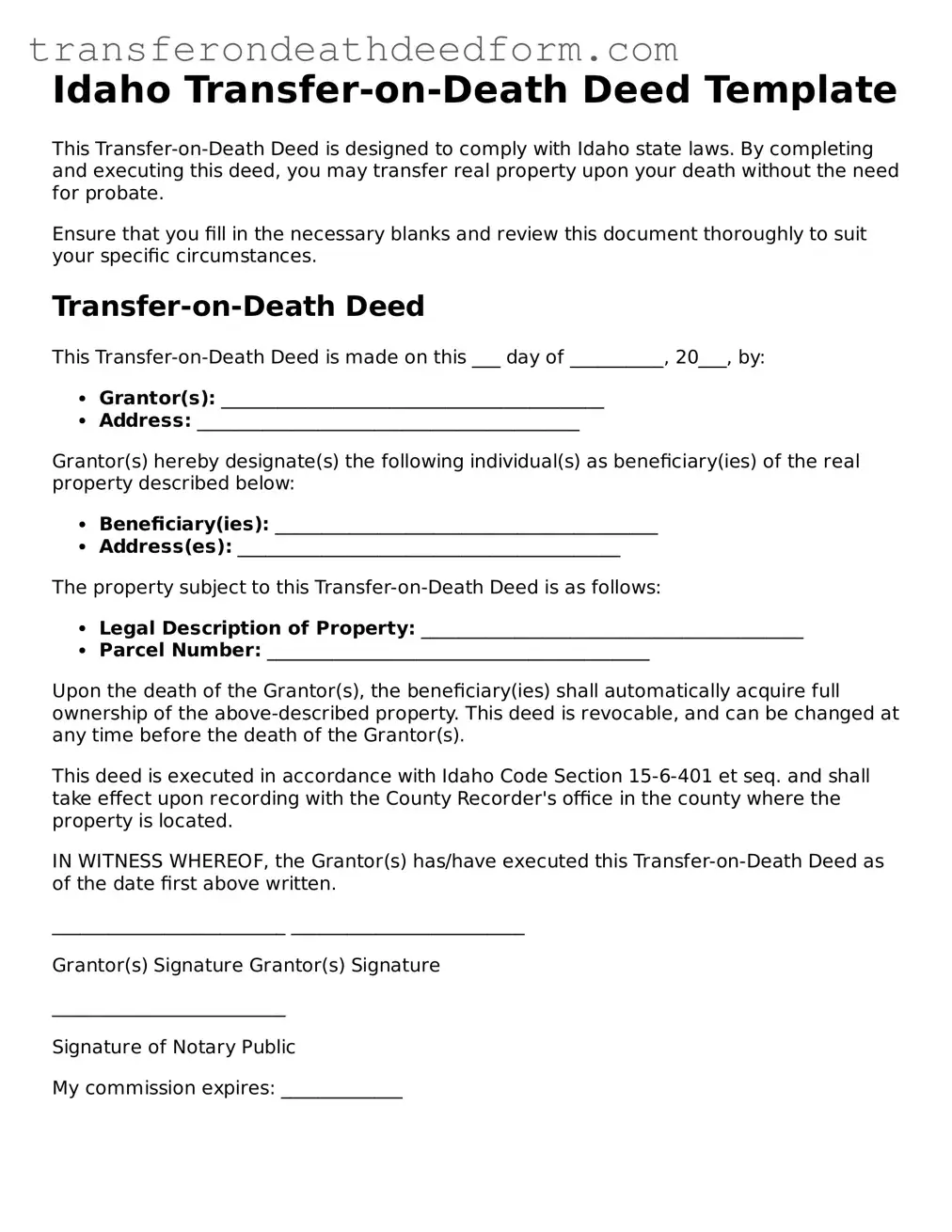Idaho Transfer-on-Death Deed Template
This Transfer-on-Death Deed is designed to comply with Idaho state laws. By completing and executing this deed, you may transfer real property upon your death without the need for probate.
Ensure that you fill in the necessary blanks and review this document thoroughly to suit your specific circumstances.
Transfer-on-Death Deed
This Transfer-on-Death Deed is made on this ___ day of __________, 20___, by:
- Grantor(s): _________________________________________
- Address: _________________________________________
Grantor(s) hereby designate(s) the following individual(s) as beneficiary(ies) of the real property described below:
- Beneficiary(ies): _________________________________________
- Address(es): _________________________________________
The property subject to this Transfer-on-Death Deed is as follows:
- Legal Description of Property: _________________________________________
- Parcel Number: _________________________________________
Upon the death of the Grantor(s), the beneficiary(ies) shall automatically acquire full ownership of the above-described property. This deed is revocable, and can be changed at any time before the death of the Grantor(s).
This deed is executed in accordance with Idaho Code Section 15-6-401 et seq. and shall take effect upon recording with the County Recorder's office in the county where the property is located.
IN WITNESS WHEREOF, the Grantor(s) has/have executed this Transfer-on-Death Deed as of the date first above written.
_________________________ _________________________
Grantor(s) Signature Grantor(s) Signature
_________________________
Signature of Notary Public
My commission expires: _____________
